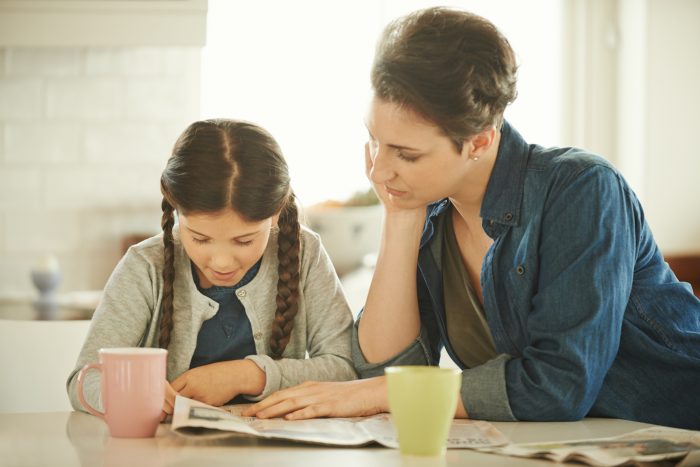Helping Kids Cope With Anxiety Over Distressing News
10.9.2019 | Seattle Children's Press Team

In an episode of the popular TV show Big Little Lies, a character’s young daughter has an anxiety attack, prompted by worries about climate change. Though this may seem drastic, Dr. Kendra Read, attending psychologist and director of anxiety programs with Seattle Children’s Psychiatry and Behavioral Medicine team, is having many conversations with families about how to cope with distressing news, such as mass shootings, crime, global politics and natural disasters.
“It’s common for kids to be worried about events that might potentially harm them or their loved ones,” Read said. “Worrying is normal and a typical part of life, but I tend to talk to children whose anxiety over current events impacts their daily functioning. They exaggerate the likelihood of bad things happening and underestimate their ability to cope with things.”
The key is helping kids cope with the worry about these events happening, even though the likelihood is small. With school back in session, Read offers advice to families whose children might experience heightened anxiety after a frightening news event.
“We want to bolster kids’ coping abilities and teach them how they can help themselves,” Read said.
Help kids feel safe
Read encourages parents to talk about tragedies in the news using simple, honest language that their child will understand, to the point that their child is interested. Parents can ask their child what they know and want to know before answering questions. Be careful to not use language that might confuse children, such as using “sleep” as a way of describing death.
Children respond to distressing news in unique ways. Parents and caregivers can validate kids’ feelings by being present with children and giving them space to talk about how they’re feeling, Read said. Sometimes kids, especially teens, don’t want to share. Parents can help normalize different emotional experiences by talking through their own reaction to the news, such as “That made me feel really scared.”
In her practice, Read helps families build skills to consider the likelihood of an event to balance kids’ thinking.
“The news tends to shrink information down so that it seems like hard, scary things are happening much more frequently than they are,” Read said. “We focus on having kids start thinking through likelihoods by gathering data, instead of providing blanket reassurances such as ‘That won’t happen.’ We want to help expand what they’re paying attention to. It’s not ignoring the threat, but it’s balancing it with information about safety, ability to cope or people who can help.”
When people get scared, they tend to pay attention to cues in the situation that suggest threat and don’t pay as much attention to the cues that indicate safety, Read said. Parents can point out that there are helpers and heroes who are working hard to make this situation better.
Be present with kids
With the popularity of digital devices, children may have greater exposure to more information than they previously had. It’s important to turn off the TV and radio, and set limits on screen time, to help protect children from being overwhelmed with repeated stories about a scary news event. However, avoidance can increase anxiety. Read says parents should not avoid all media about a distressing event.
“Some families feel like they can’t watch the news at home or that they’re walking on eggshells in terms of what to say in front of their children,” Read said. “However, kids still get access to information from peers and at school, so it’s a losing battle.”
It’s always best to view media with kids. Parents can support older kids and teens by being present with them at least for some of their media consumption. By watching or reading the news with kids, parents and caregivers have the opportunity to have a conversation and understand how kids are processing information. Parents can also help children be critical consumers of information, whether it’s from news outlets, social media, peers at school or other sources, in an age-appropriate manner.
Since parents and caregivers are the experts on their kids, Read recommends monitoring for changes in behavior. This might include different eating or sleep patterns, and whether kids are worried to go certain places. Pay attention to whether kids are engaged in behaviors that aren’t necessary in the situation, such as carrying an emergency kit everywhere they go if they are afraid of a disaster happening. If their child’s behavior and mood changes are consistent and lasting, parents should contact their child’s healthcare provider.